This was an existing pub of the same name, taken over by Wetherspoon. Built in c1879, the Great Western Hotel served the nearby Great Western Railway station.
Framed prints of early Great Western Railway posters.
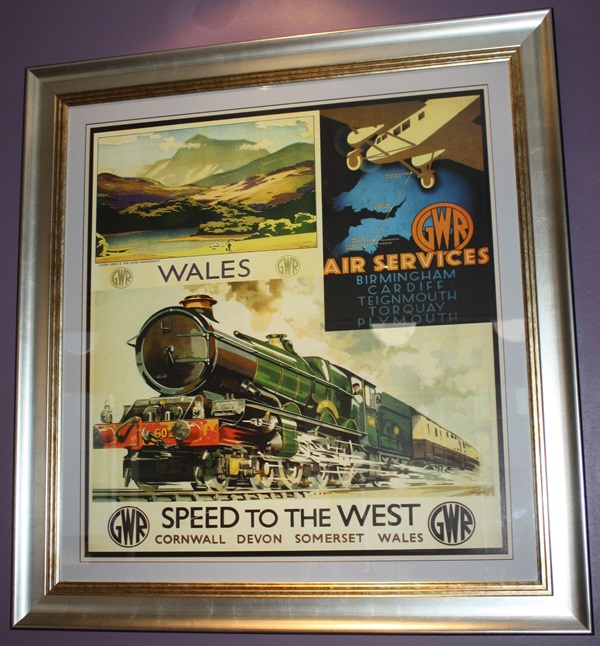
Framed programmes and posters from sporting events in Cardiff.
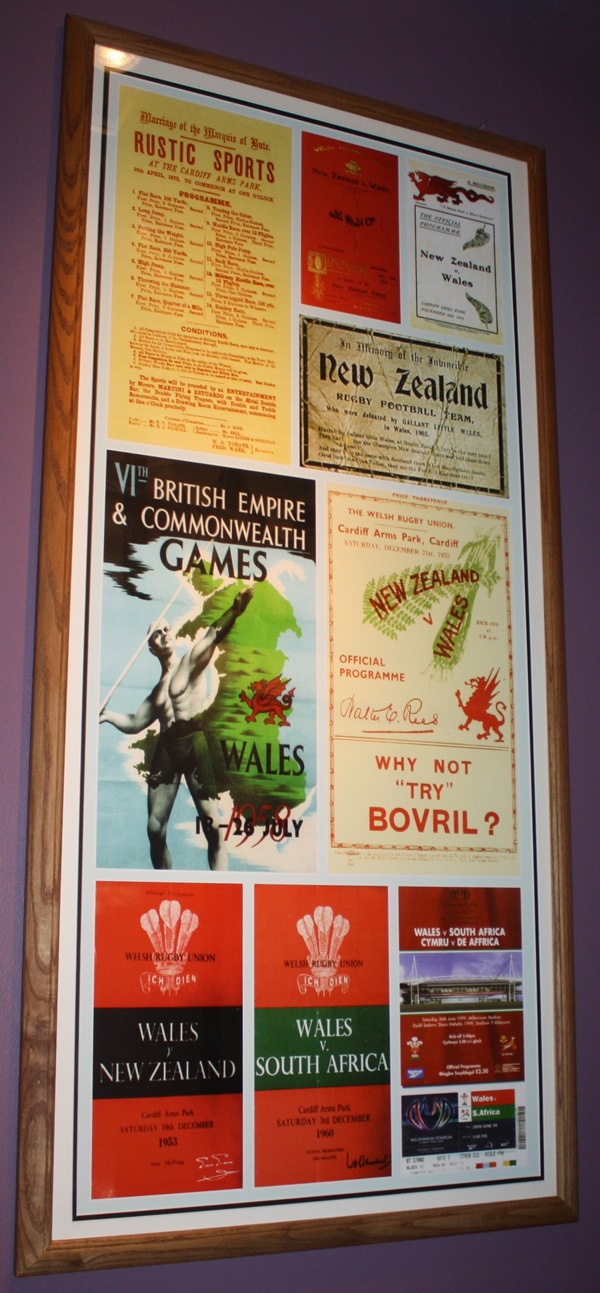
These include various international rugby matches and the 1958 British Empire and Commonwealth Games.
Framed photographs of the former National Stadium of Wales, Cardiff Arms Park.
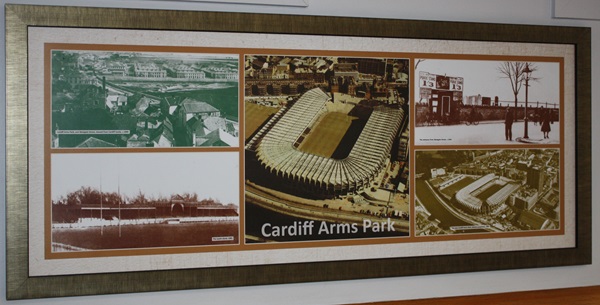
The stadium was replaced by the Millennium Stadium, opened in 1999, and is currently known as the Principality Stadium.
Framed photographs of British Lions matches during the 1970s.
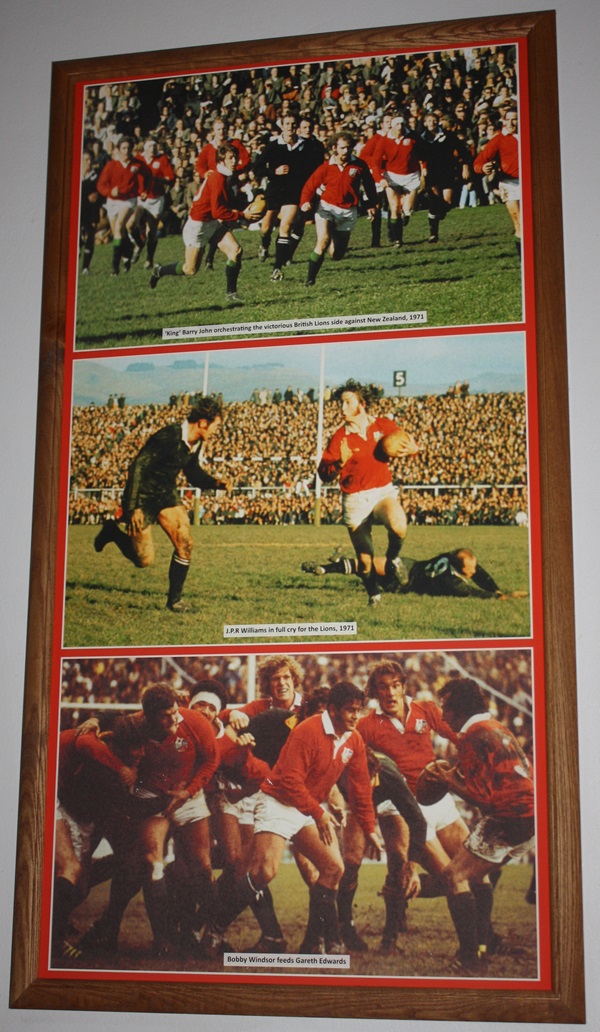
Photograph captions (from top to bottom) read: ‘King’ Barry John orchestrating the victorious British Lions side against New Zealand, 1971.
J.P.R Williams in full cry for the Lions, 1971.
Bobby Windsor feeds Gareth Edwards.
Framed photographs of Welsh members of the 1997 British Lions squad, during their tour of South Africa.
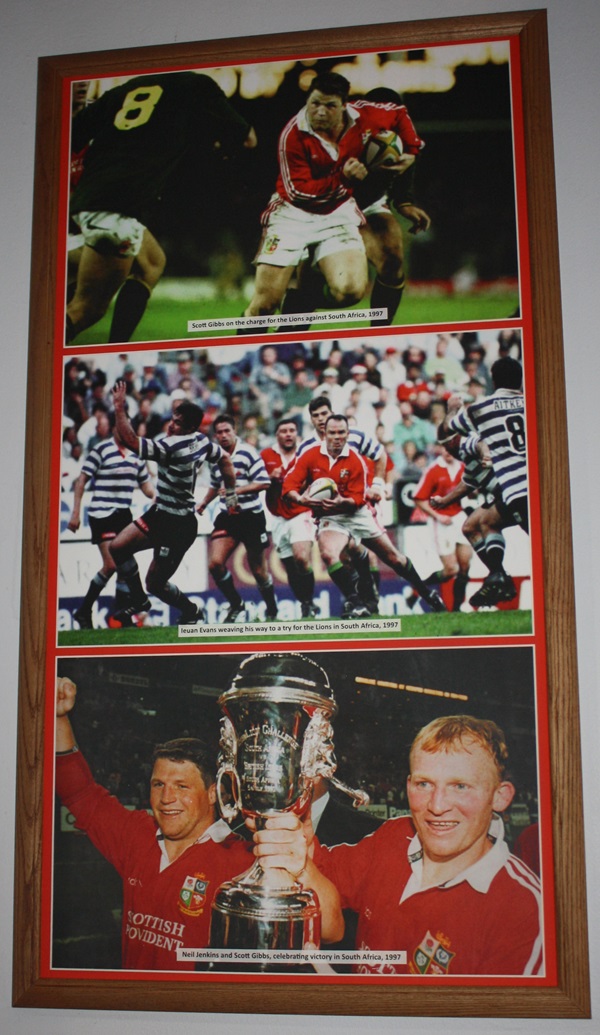
Photograph captions (from top to bottom) read:
Scott Gibbs on the charge for the Lions against South Africa, 1997.
Ieuan Evans weaving his way to a try for the Lions in South Africa, 1997.
Neil Jenkins and Scott Gibbs, celebrating victory in South Africa, 1997.
Framed photographs of some Great Cardiffians.
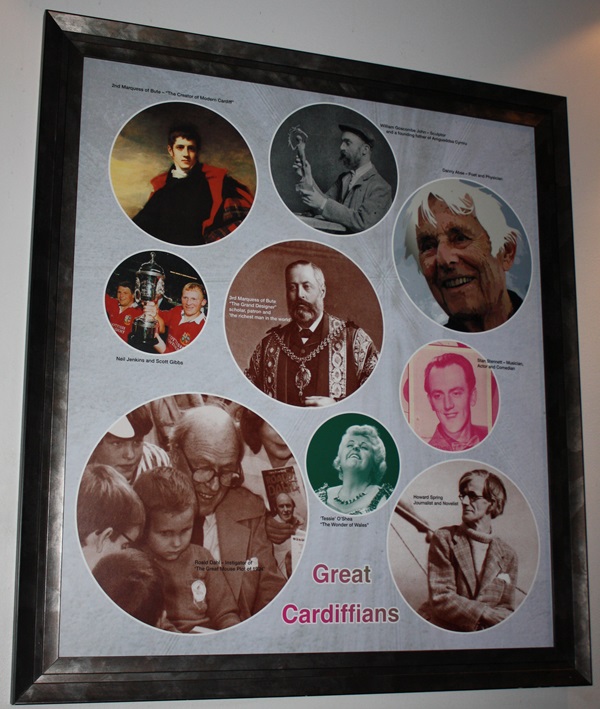
‘Great Cardiffians’ include (top row, left to right): 2nd Marquess of Bute – “The Creator of Modern Cardiff”; William Goscombe John – Sculptor and a founding father of Amgueddfa Cymru; Danny Abse – Poet and Physician; (middle row, left to right) Neil Jenkins and Scott Gibbs; 3rd Marquess of Bute “The Grand Designer” scholar, patron and ‘the richest man in the world’; Stan Stennett – Musician, Actor and Comedian; (bottom row, left to right) Roald Dahl – instigator of ‘The Great Mouse plot of 1924’; ‘Tessie’ O’Shea “The Wonder of Wales”; Howard Spring Journalist and Novelist.
Framed photographs and text about Cardiff-born author Roald Dahl.
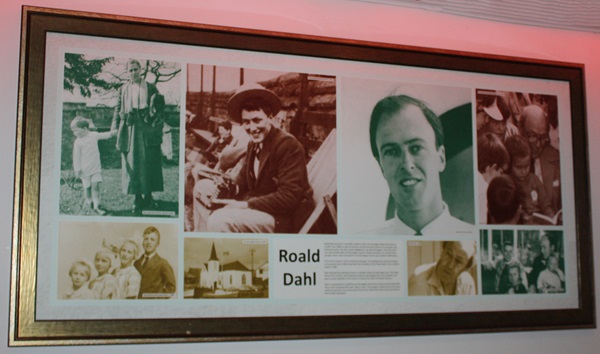
The text reads: Roald Dahl was born in Llandaff, Cardiff, in 1916. His Norwegian father had come to Cardiff in the 1880s to seek his fortune, and became joint owner of a successful ship broking business. His wife, Sophie Magdalene, was also Norwegian. Their first child was named after the Norwegian explorer Roald Amundsen. He, and his three younger sisters, were christened in the Norwegian Church just outside Cardiff docks.
This church closed in 1974 and fell into disrepair. The building was saved and moved to its present site in 1990. Roald Dahl was President of the Preservation Trust, until his death in 1990.
Dahl attended the Cathedral School in Llandaff, where his chief legacy was ‘The Great Mouse Plot of 1924’, which featured a dead mouse slipped into a jar of sweets, and gave an early indication of the sense of humour for which he became famous.
Dahl is remembered in Cardiff by the Norwegian Church arts Centre and by Roald Dahl Plass in the revamped dock area. There is also a ‘blue plaque’, placed, not on the house where he was born, but on the wall of the former sweet shop where the Great Mouse Plot of 1924 took place.
Framed photographs and text about television writer and novelist Terry Nation, along with photos of the Doctor Who daleks.
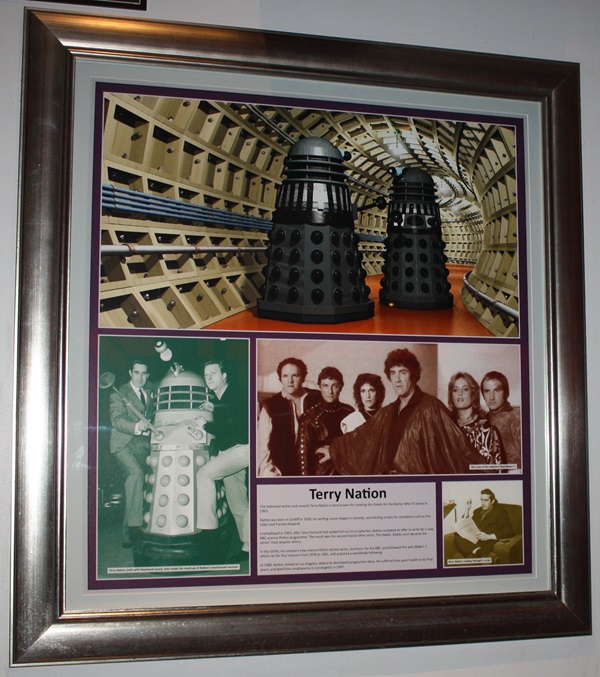
The text reads: The television writer and novelist Terry Nation is best known for creating the Daleks for the Doctor Who TV series in 1963.
Nation was born in Cardiff in 1930. His writing career began in comedy, contributing scripts for comedians such as Eric Styles and Frankie Howerd.
Unemployed in 1963, after Tony Hancock had sacked him as a scriptwriter, Nation accepted an offer to write for a new BBC science-fiction programme. The result was the second Doctor Who serial, The Daleks. Daleks soon became the series’ most popular aliens.
In the 1970s, he created a new science-fiction drama series, Survivors, for the BBC, and followed this with Blake’s 7, which ran for four seasons from 1978 to 1981, and acquired a worldwide following.
In 1980, Nation moved to Los Angeles, where he developed programme ideas. He suffered from poor health in his final years, and died from emphysema in Los Angeles in 1997.
Framed photographs and text about Cardiff-born author Howard Spring.
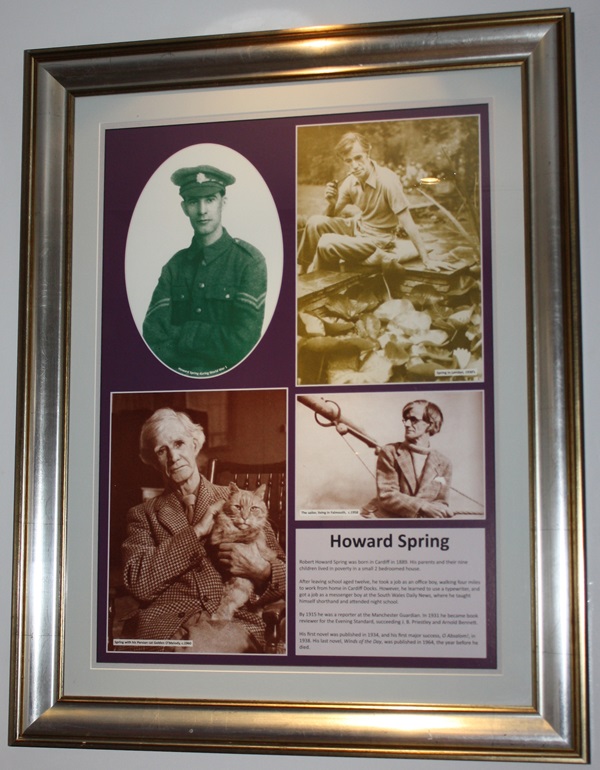
The text reads: Robert Howard Spring was born in Cardiff in 1889. His parents and their nine children lived in poverty in a small 2 bedroomed house.
After leaving school aged twelve, he took a job as an office boy, walking four miles to work from home in Cardiff Docks. However he learned to use a typewriter, and got a job as a messenger boy at the South Wales Daily News, where he taught himself shorthand and attended night school.
By 1915 he was a reporter at the Manchester Guardian. In 1931 he became book reviewer for the Evening Standard, succeeding J.B. Priestly and Arnold Bennett.
His first novel was published in 1934, and his first major success, O Absalom!, in 1938. His last novel, Winds of the Day, was published in 1964, the year before he died.
Framed photographs and text about Welsh aviator and airship builder Ernest Thompson Willows, along with photos of a few of his airships.
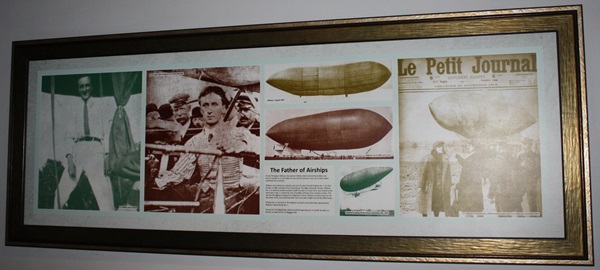
The text reads:
Ernest Thompson Willows, the pioneer Welsh aviator and airship builder, was born in Cardiff on 11 July 1886. He was the first person in the UK to hold a pilots certificate for an airship.
Willows, who trained as a dentist, was just 19 when he built Willows No. 1, his first airship, in 1905, and flew it fromEast moors. The flight lasted 85 minutes. Willows No. 2, in which he landed outside Cardiff City Hall on 4 June 1910, was re-built in the same year as No. 3, named the City of Cardiff, and flown from London to Paris. This was the first airship crossing from England to France. Willows arrived at Paris on 28 December 1910, and celebrated New Year’s Eve with a flight around the Eiffel Tower.
Willows No. 4 4 was built in Birmingham and sold to the Admiralty, becoming His Majesty’s naval Airship No. 2.
Framed photographs and text about Cardiff-born poet and chest clinic specialist Dannie Abse.
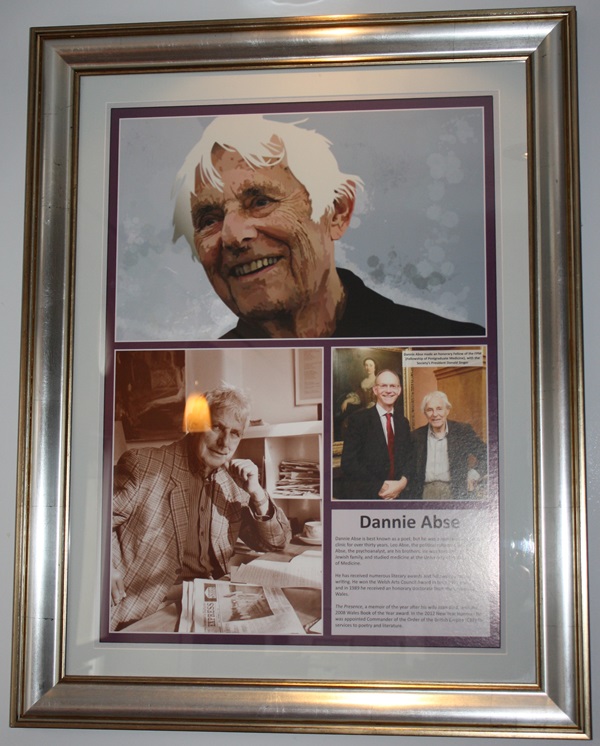
The text reads:
Dannie Abse is best known as a poet, but he was a specialist at a chest clinic for over thirty years. Leo Abse, the political reformer, and Willfred Abse, the psychoanalyst, are his brothers. He was born in Cardiff, into a Jewish family, and studied medicine at the University of Wales College of Medicine.
He has received numerous literary awards and fellowships for his writing. He won the Welsh Arts Council Award in both 1971 and 1987, and in 1989 he received an honourary doctorate from the university of Wales.
The Presence, a memoir of the year after his wife Joan died, won the 2008 Wales Book of the Year award. In the 2012 New Year Honours he was appointed Commander of the Order of the British Empire (CBE) for services to poetry and literature.
Framed prints of various scenes of Cardiff.
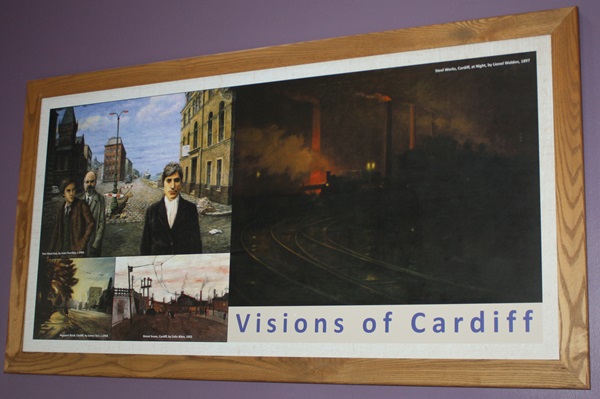
Works include: ‘Steel Works, Cardiff, at Night’ by Lionel Walden, 1897.
‘Port Road East’ by Evans Charlton, c.1983.
‘Newport Road, Cardiff’ by James Tarr, c.1954.
‘Street Scene, Cardiff’ by Colin Allen, 1953.
Framed copy of a plan of the centre of Cardiff in 1851.
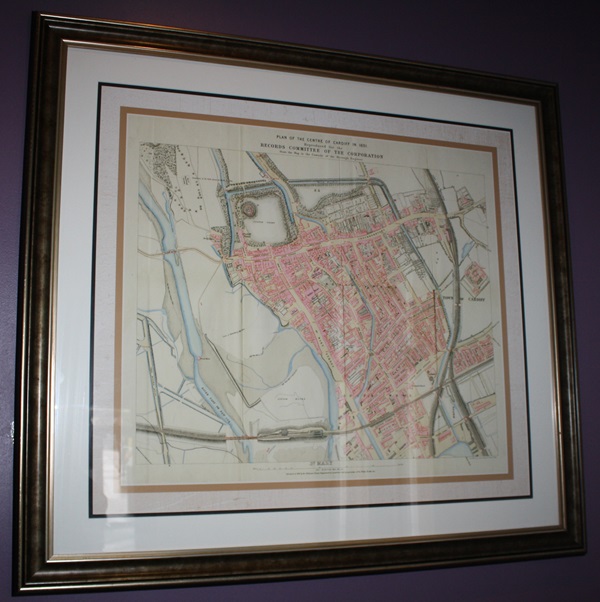
Additional text reads: Reproduced for the Records Committee of the Corporation from the Map in the Custody of the Borough Engineer.
Surveyed in 1851 by the Ordnance Survey Department in accordance with the provisions of the Public Health Act.
Framed illustrations and photographs about Cardiff’s history.
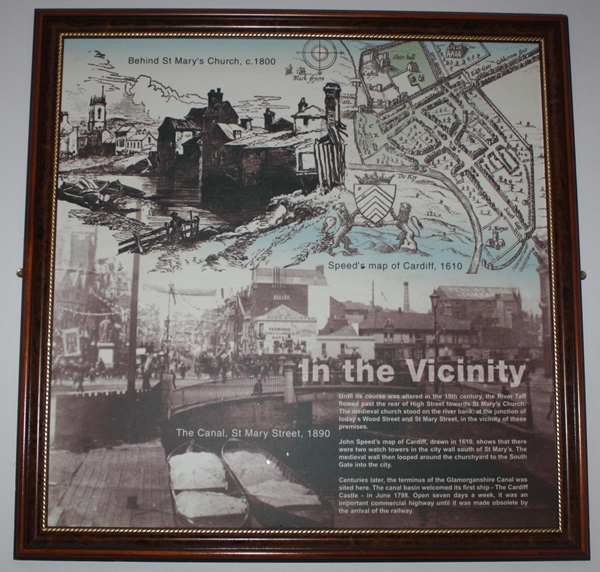
The text reads:
Until its course was altered in the 19th century, the River Taff flowed past the rear of High Street towards St Mary’s Church. The medieval church stood on the river bank, at the junction of today’s Wood Street and St Mary Street, in the vicinity of these premises.
John speed’s map of Cardiff, drawn in 1610, shows that there were two watch towers in the city wall south of St Mary’s. The medieval wall then looped around the churchyard to the South Gate into the city.
Centuries later, the terminus of the Glamorganshire Canal was sited here. The canal basin welcomed its first ship – The Cardiff Castle – in June 1798. Open seven days a week, it was an important commercial highway until it was made obsolete by the arrival of the railway.
Titles of illustrations include (top left): Behind St Mary’s Church, c1800, (top right) Speed’s map of Cardiff, 1610, (bottom) The Canal, St Mary Street, 1890.
Framed photographs of Cardiff’s history.
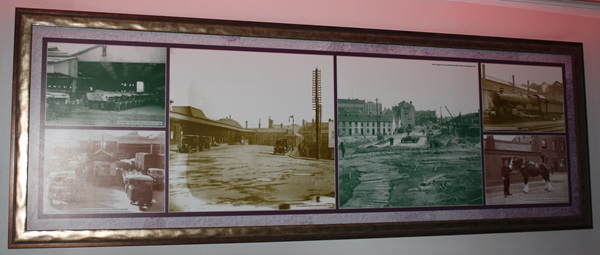
Framed photograph and painting of the Pier Head, Cardiff.
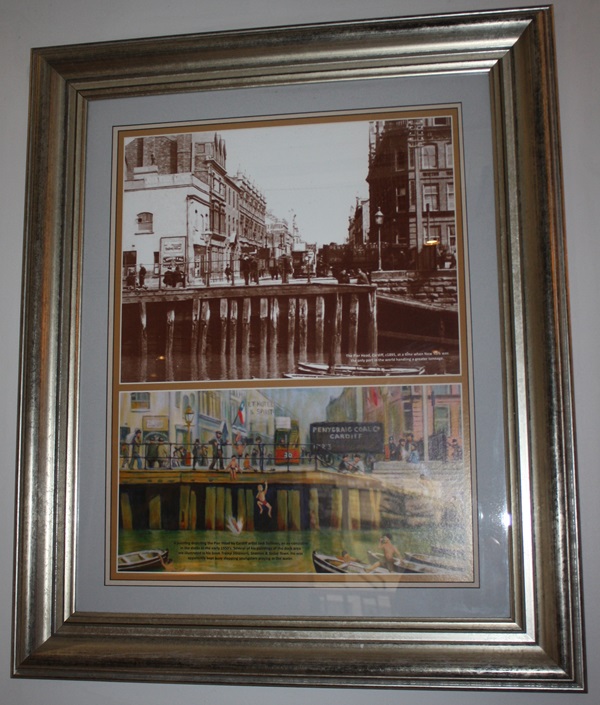
The text reads:
The Pier Head, Cardiff, c1895, at a time when New York was the only port in the world handling a greater tonnage.
A painting depicting the pier Head by Cardiff artist Jack Sullivan, an ex-constable in the docks in the early 1950’s. Several of his paintings of the dock area are illustrated in his book Tramp Steamers, Seamen and Sailor Town. He was apparently kept busy stopping youngsters playing in the water.
A framed illustration of the coat-of-arms of the Great Western Railway.
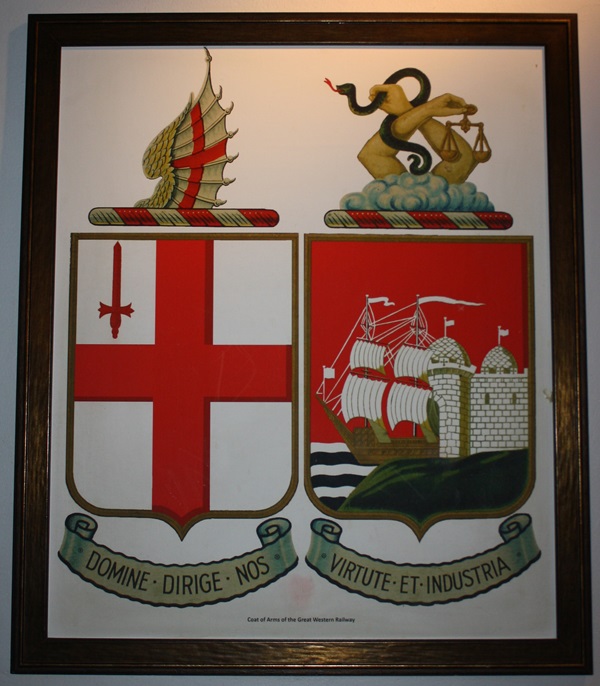
A close-up photo of the steps bearing a logo inspired by past Great Western Railway logos.
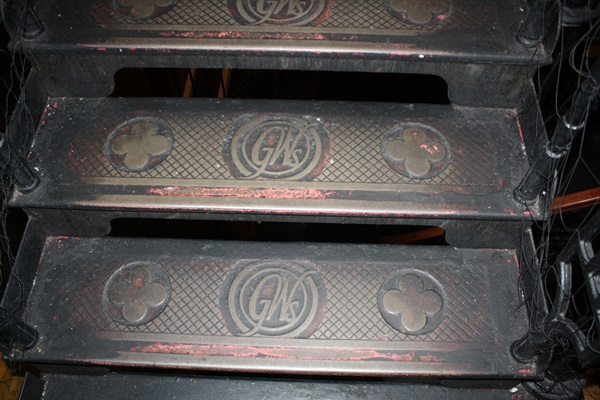
A view of the stairwell from above.
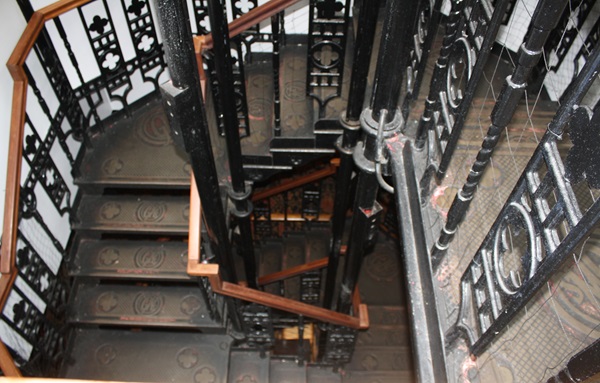
An internal photograph of part of the pub’s upper floor.
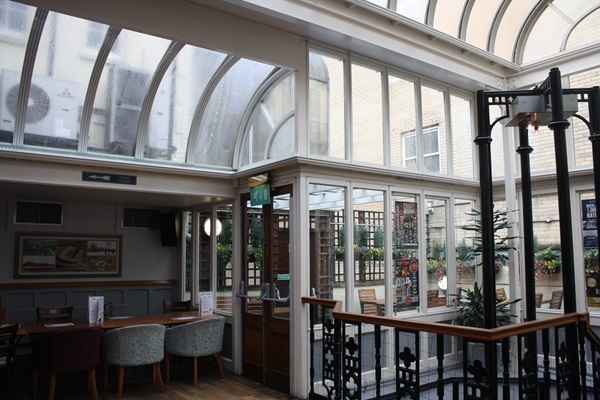
A framed photograph of The Great Western.
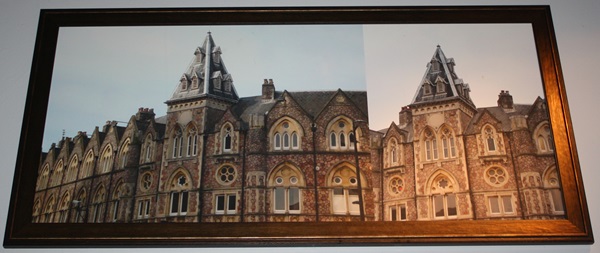
The sign above the entrance to The Great Western.
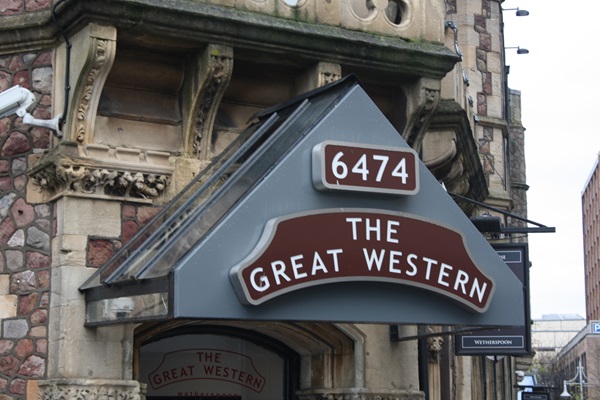
External photograph of the building – side entrance.
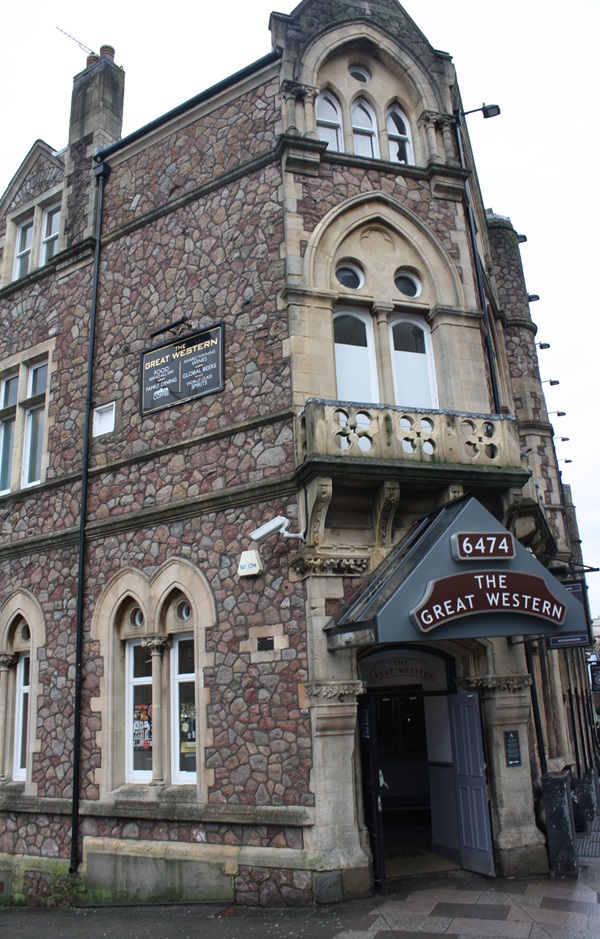
External photograph of the whole building.
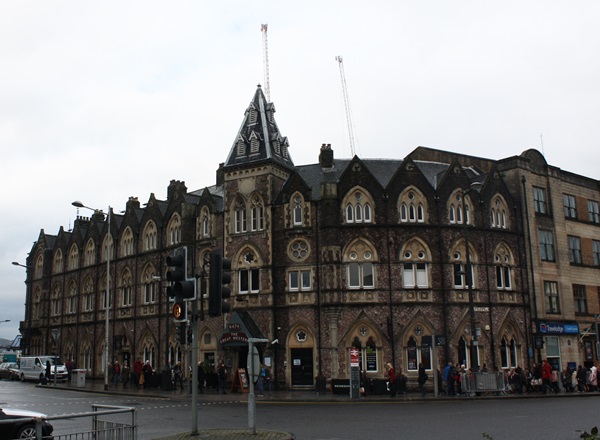
Cardiff Central railway station.
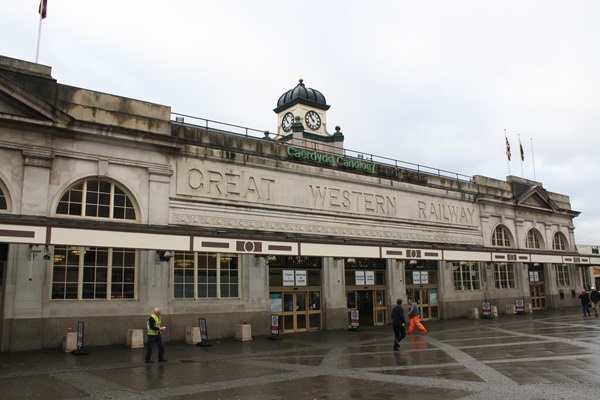
If you have information on the history of this pub, then we’d like you to share it with us. Please e-mail all information to: pubhistories@jdwetherspoon.co.uk